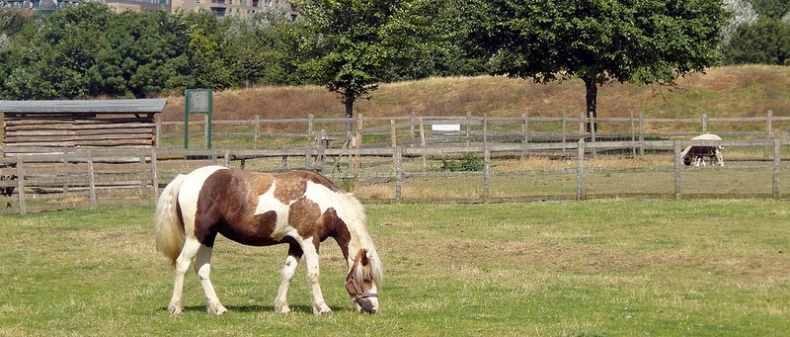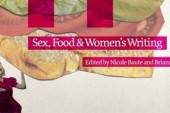
Image: diamond geezer/Flickr
Charting a course to 2050 is going to be a daunting task for any city. Over the next few weeks, Justin Robertson will be placing a microscope on Toronto’s key industries and institutions that will be shaped by the predicted population growth facing the city in a series called “The Future of Our City.” The five-part series will examine how the city will be impacted by the aging population, the future of cars and transit and solutions to traffic congestion, and how the face of education and learning environments will change.
This week: We examine the evolving food industry
Thomas Pawlick, science journalist and author of The End of Food, predicted a sinister fiction-like future if we don’t put an end to large agricultural corporations. He uses the tomato as one example. One issue he has is with big-box factories and their gene-altering methods they use to interfere with crops that deny us valuable nutrients. Tomatos now contain 30.7 per cent less vitamin A and 16.9 per cent less vitamin C than they did in 1963. In some countries, sub-Saharan Africa as an example, the lack of a single nutrient–vitamin A–has left more than 3 million children permanently blind. When you look at a perfectly round, firm and red, (on the outside) you assume it’s going to taste good. And have the nutrients you need from a tomato. But it doesn’t. Industrial food chains are efficient, but they — according to food industry experts — provide diminishing returns and less bang for your buck.
Pawlick offers one solution : make use of any space you have and grow your own garden. While growing your garden may not change the food industry’s routine, Toronto Food Policy Council president Lauren Baker says small, low-impact farms, continue to feed majority of the worlds population. Something like 70 per cent of the world’s population are fed by small farms. Baker shares a similar vision to Pawlick on the future of growing food — two alternatives for Toronto. The first is a multi-use farm, in a place like Norfolk County where cattle is grass-fed, where tall green prairies exist and carbon-farming happens in a perfect ecosystem. Throw in pollinators for bees; birds in a total closed loop system. “The future means eating less meat, but triple-farms like this, is something we can envision getting our food from,” Baker said. “These types of farms are happening now.” The second alternative is creating an abundance of city farms, such as the latest Black Creek farm at Jane and Finch. Baker explains, this trend will eventually take over the city and will eventually be part of city life. “You’ll see these farms existing around schools, government buildings,” she said. “It’s all based on the Havannah Cuba Model — it’s all about community growing.
Baker said there are too many factors to predict which type of model will flourish more than the other as we move toward 2050. Thing like health, economy and climate change (see: drought, floods, natural disasters) will be some of the measures that will drive us in either direction. “Extreme climate events have led to new innovations in agriculture, beyond genetic modifications that will feed us in the future,” she said. “But we need to stop thinking of cities as islands of urbanization.”
When you head to your local grocery store in the future, Baker said, you’ll be able to scan it and read a blurb about where the food came from and who the farmer is. Traceability is happening already, one mainstream example is the McDonalds food campaign, but it will be even more accessible to shoppers. Baker concedes though, in the case of the XL beef model, it can be hard to trace where meat comes from.“Beef comes in and processed all together, then shipped everywhere. It is very technical to trace,” she said. “People are questioning where their food comes from. It’s only going to become more important.”
Michael Wolfson works as a senior advisor of food and beverage at the City of Toronto. It’s his job to create jobs for people in the food industry. He’s also on the Greater Toronto Agriculture Committee and the Golden Horseshoe Farming Alliance. Wolfson said he’s seen a gap forming. “Right now there’s a huge disconnect between farming communities and urban dwellers. If you look at farmers who are working, their average age is 50 and typically they are white farmers,” he said. “They don’t reflect Toronto’s urban demographics. What we are trying to do is change that and connect them to ethnic foods that are in demand.” Wolfson said a St. Thomas farmer called him two years ago because he wanted to try growing a different kind of crop: edamame. Wolfson connected him to a retailer and now the soy-bean farmer has exploded into his own frozen food label. He’s even reached out to another grower in Michigan to expand his product. When asked if this situation was going to be typical in the future, Wolfson said he was optimistic. Another food trend that we’ll see more often is locally grown products mixed into with imported brands. Wings Food just received a rural grant from Ontario’s Ministry of Agriculture to produce Asian noodles made from Ontario Wheat. The ones you see on shelves are all made in China and Thailand, but that will change. This connectivity – farmers to retailers to consumers – is something the food industry has been missing according to Wolfson. “The future of food should have food demographic that reflects the demands of the city. That’s been a gap I’ve noticed that we need to change — and we are slowly changing it,” he said. “Can urban-agriculture have its own industry in the future? I’m waiting to see what happens.”
The food industry seems one of the hardest industries to predict a mapped-out future because it is at the mercy of unforeseen circumstances such as droughts, floods and natural disasters. A recent Jeremy Grantham report paints a bleak picture globally for the food industry. He says “There are too many factors that will make growth in food output increasingly difficult where it used to be easy” and that we are five years into food crisis that is unlikely to fade for many decades. He cites weather instability, rise in fertilizer prices and bad farming practices as some of the issues moving ahead. We can either sit and wait for the unknown to dictate our food path, or, we can embrace local urban food systems that might prove to be the answer we are looking for.
Next week: Part V The future of health and medicine
____
Justin Robertson is a freelance journalist from Toronto. His work has appeared in The Walrus, National Post and Toronto Standard. Follow Justin on Twitter @justinjourno
For more, follow us on Twitter @TorontoStandard and subscribe to our newsletter.














